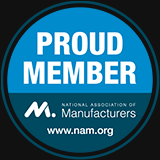
How additive manufacturing is being used to improve production and reduce costs in traditional manufacturing
CERRITOS, California- October 26,2017- Since its creation in the 1980s additive manufacturing, also known as 3D printing, has gained recognition within the traditional manufacturing and industrial industries due to its versatility and cost-effective applications. Originally, models were printed layer by layer using photopolymer resins as material and commonly used for prototyping. However in modern day printing, models can be made from a variety of materials such as carbon fiber, magnetic, metal, clay, biodegradable, and many more. 3D printing is used in a multitude of industries to create prosthetic limbs in the medical field, components for aerospace construction, and tools to improve the manufacturing industry.
Through traditional manufacturing, an engineer would create a computer model of an engine manifold and wait about four months for a $500,000 prototype. With 3D printing, multiple iterations of the same component takes four days and cost[s] $3,000. -Jim Joyce, Deloitte
For manufacturing SMEs, 3D printers offer cost saving alternatives in various production processes. During machining for example, segments of a material are removed to create a part, therefore creating scrap. Conversely, scrap is significantly eliminated when the same part is made using a 3D printer because material is added, layer by layer, instead of being removed. Essentially, 3D printed parts are usually made in one uniform piece, thereby increasing the parts' durability and overall strength. Thus, by printing the part in one piece, the part is lighter in weight and reduces the need for assembly. Furthermore, the computer-aided design (CAD) files for parts saves costs in both labor and resources that previously may have been dedicated to dies and fixtures. CAD files can also be altered or paused mid-print to make design revisions when necessary. Additionally, one of the major benefits of 3D printing is ease of use for the operator when printing two or more products with vastly different designs.
 Currently, manufacturing companies use 3D printing for part replacement, cheaper prototyping, complex tool fabrication, and more. Manufacturers and machine operators are able to download or design CAD files to print replacement parts in a matter of hours. This can significantly reduce production down time, and the same layer by layer construction process that reduces scrap also allows more elaborate tools and parts to be printed. During machining, these same designs might be too elaborate or time consuming to create. In addition, during the prototyping process various models can more easily be printed and revised, therefore consuming less resources.
Currently, manufacturing companies use 3D printing for part replacement, cheaper prototyping, complex tool fabrication, and more. Manufacturers and machine operators are able to download or design CAD files to print replacement parts in a matter of hours. This can significantly reduce production down time, and the same layer by layer construction process that reduces scrap also allows more elaborate tools and parts to be printed. During machining, these same designs might be too elaborate or time consuming to create. In addition, during the prototyping process various models can more easily be printed and revised, therefore consuming less resources.
While the complexities of 3D printing may be daunting, Toolots is positioned to help SMEs or hobbyists explore additive manufacturing through its latest product, the Desktop Mini ISEE 3D Printer. The ISEE can be powered by a 12V power source and includes PLA filaments, a biodegradable thermoplastic made from renewable resources like corn starch. PLA is one of the easiest filaments to work with, making the ISEE and its simpler design perfect for beginners. Learn more about purchasing the ISEE 3D Printer.
To learn more about the ISEE, or for purchasing information, click here.
###






